In February of 2021, my colleague Dr. Jay Moore wrote about Marcus Garvey highlighting the story behind the Black Star Line. Recent research has uncovered more about the Black Star Line and the Garvey movement. So, I chose to tell the lost story of the Marcus Garvey movement in Newport News.
Who was Marcus Garvey?
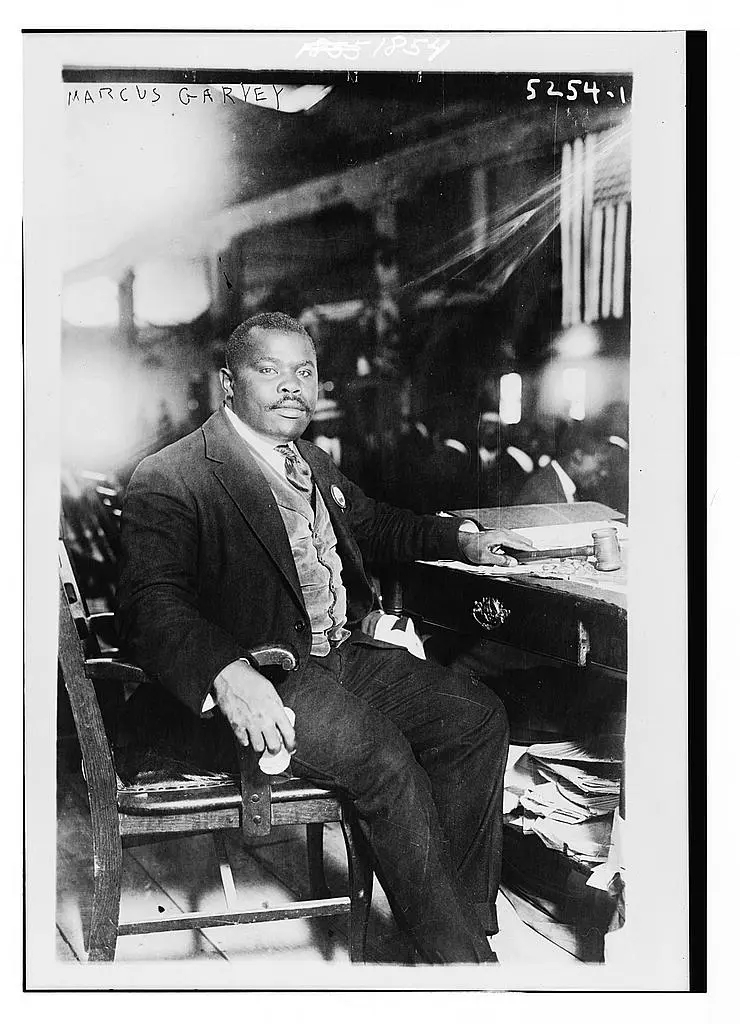
Marcus Garvey was born in St. Ann’s Bay, Jamaica, in 1887. After working a few jobs in Jamaica and being blacklisted for his involvement in trade union politics, Garvey left for Central America, went to England, and returned to Jamaica after three years abroad due to poverty. During his travels, Garvey observed the condition of Blacks in the Western Hemisphere and how democracy in England differed from autocracy practiced in the tropical colonies.1 Out of this experience, Garvey, along with his future wife Amy Ashwood, organized the Universal Negro Improvement Association and African Commercial League. Inspired and influenced by Booker T. Washington, Garvey saw education as the way to better the condition of Black Jamaicans and started raising funds for a proposed industrial school. However, local Black Jamaicans did not share Garvey’s vision and did not support the organization or the school. It was out of this disappointment that Garvey traveled to New York City.2
Fertile ground
Newport News in 1918 was a bustling place. As part of the Hampton Roads Port of Embarkation (HRPE), Camp Stuart and Camp Alexander housed soldiers and equipment leaving Newport News as part of the American Expeditionary Force (AEF) in France. The war brought numerous jobs to Newport News. (To learn more about Newport News during World War I, read the post by John Quarstein, director emeritus of the USS Monitor Center). Because of the abundance of employment opportunities surrounding the war effort, many African Americans born and raised in the rural areas of Virginia, North Carolina, and other places south of Hampton Roads came to Newport News for jobs. Amid this wartime boom, Marcus Garvey arrived in Newport News.
H. Vinton Plummer, one of the early members of the Newport News division of the Universal Negro Improvement Association (UNIA), spoke to The Spokesman newspaper in 1927 about the organization’s establishment in the city. Plummer first met Garvey in Newport News around September 1918. Garvey, who had already established two divisions of the UNIA in New York City, came to Newport News to launch the third division. Garvey, Plummer, R.H. Taylor, and eight others met for dinner at Gaskins Café (located at 2414 Madison Ave, on the present-day campus of Marshall Early Learning Center). The attendees, impressed by Garvey’s ideas, arranged for him to speak at First Baptist Church on 23rd and Jefferson in Newport News (now First Church (Baptist)), located at 24th Street and Wickham Ave.) the following night. Word of Garvey’s appearance spread fast, so fast that the church was crowded with Black and white people eager to hear him. Despite there being no record of Garvey’s speech, his message of Black pride, Pan-African unity, and economic uplift proved to connect with the audience when 100 people joined the Newport News division of the UNIA that night. Within six months of its establishment, the Newport News division had a roll of 3,000 to 4,000 members.3 By 1919, estimates of Newport News UNIA membership was 7,000, making it the second largest UNIA division outside of New York.4
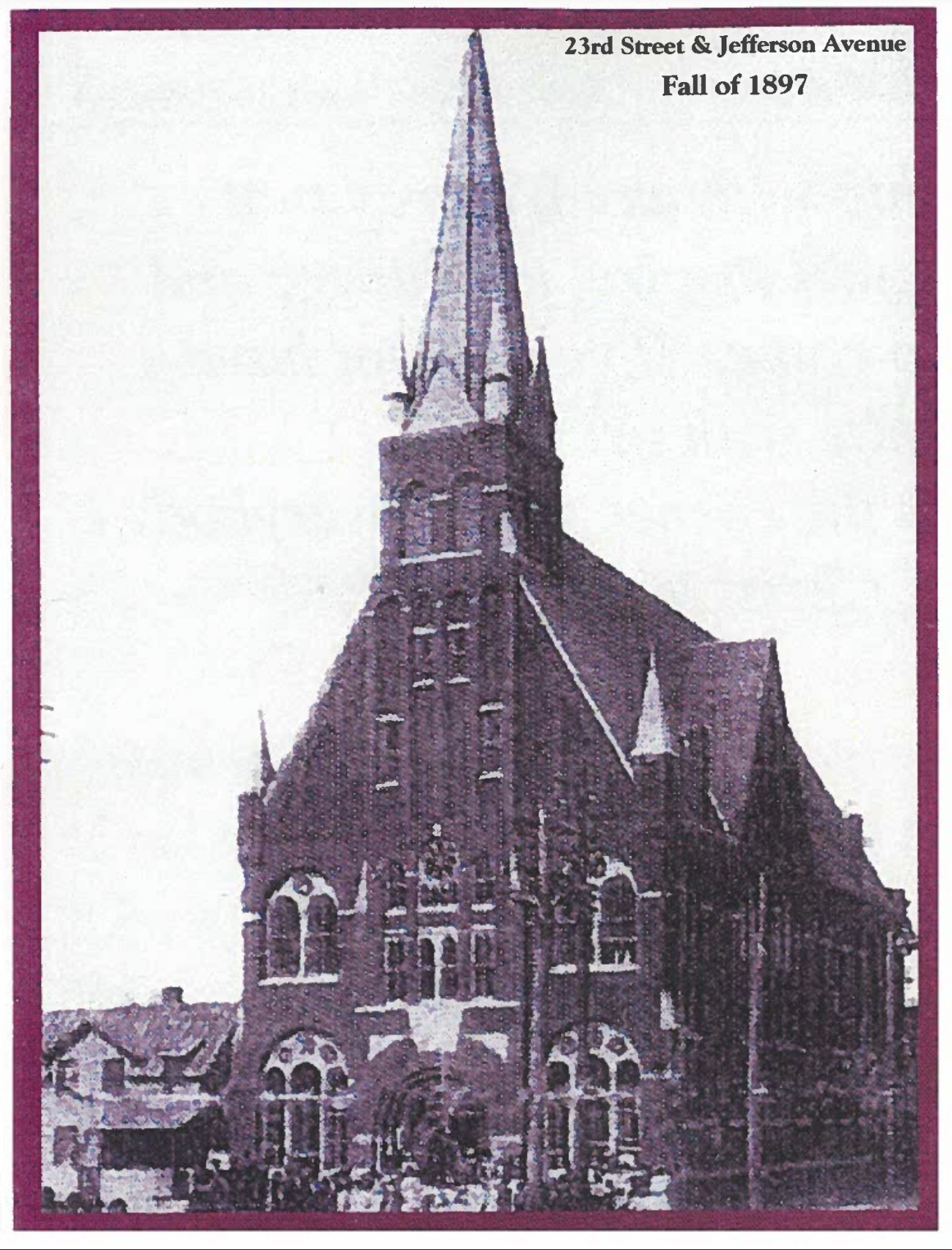
‘…the call of the Universal Negro Improvement Association.’
As Garvey’s message spread, he created the physical manifestation of his message: The Black Star Line, a steamship company operated by Garvey and the UNIA to promote worldwide commerce among the African diasporas. It was incorporated in Delaware in 1919, with shares sold at $5 each.5 Ready to sell his dream and Black Star Line stock, Garvey came to Newport News for a mass meeting at the Dixie Theater (located on 22nd and Jefferson, now Newport Harbour Apartments). During this meeting, Garvey sold the first $500 of Black Star Line stock in Newport News.6 As his message found fertile ground in Newport News, so did his enterprise. Newport News Garveyites (like many Virginian Garveyites, especially in Hampton Roads) shared Garvey’s views on the potential success of the Black Star Line. Garvey wrote in 1919:
“The city of Newport News has responded most splendidly to the call of the Universal Negro Improvement Association. At the end I found an enthusiastic people anxiously waiting to receive us and to show their fullest appreciation of the work we have started in the interest of our downtrodden people.”7
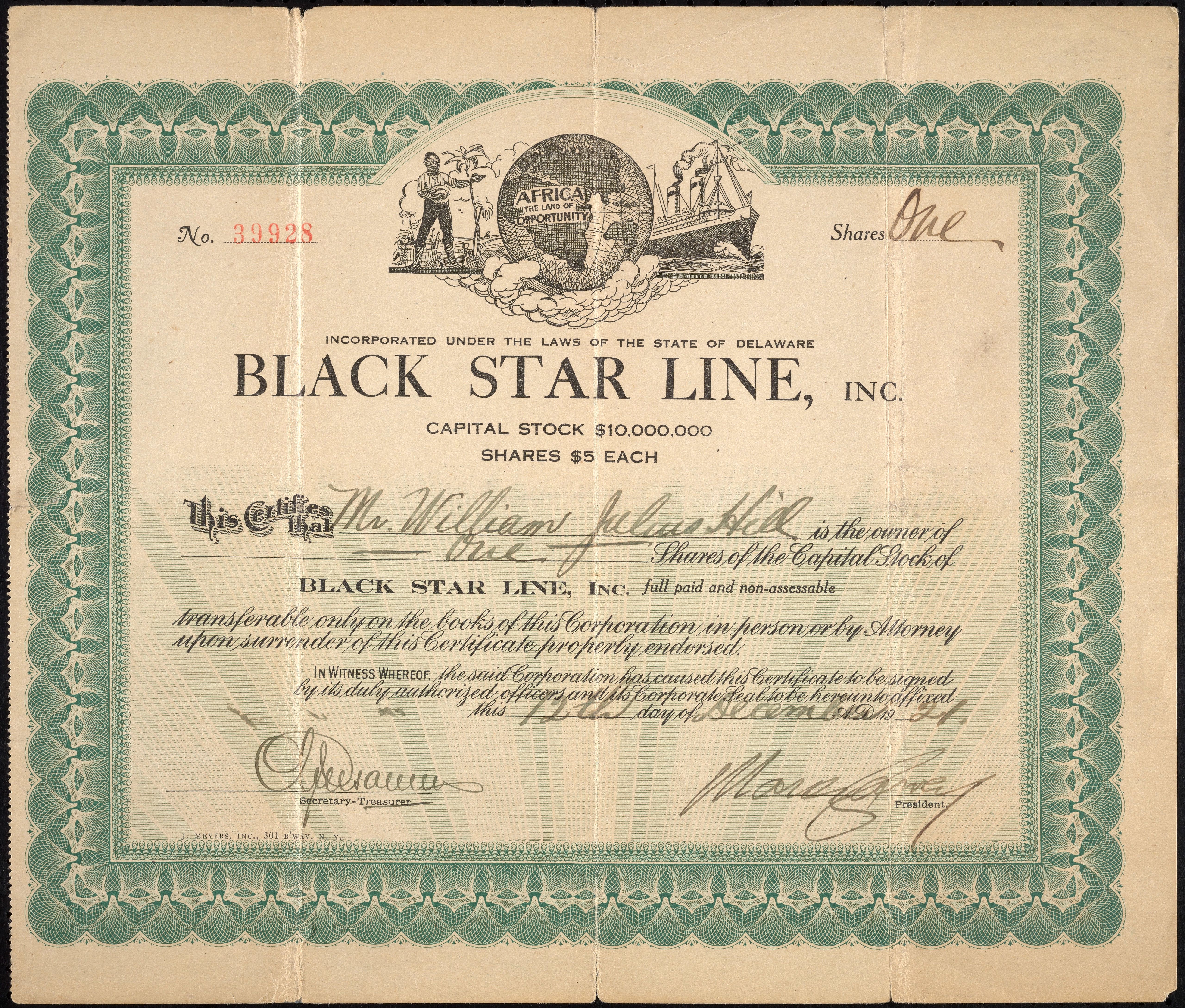
The investment appeal of the Black Star Line by area supporters came from a strong desire to serve Black people and to create jobs. For the men and women working during World War I and postwar Newport News, employment opportunities were plentiful for African American men. However, the racial attitudes of the time subjugated African Americans to the lowest-paying, least stable jobs. But Garvey, through the Black Star Line, promised to provide Black laborers with skilled, high-paying jobs. Many of Virginia’s Garveyites believed that when their economic position strengthened, African Americans would be in a better position to secure their political rights. N. Colatus Drew, a member of the Newport News UNIA, said in the Negro World, “we can demand, not beg for the same rights and privileges that are meted out to others.” The promises and hopes of the Black Star Line reached a fever pitch when the ship Frederick Douglass sailed into Hampton Roads.8 While Newport News Garveyites believed in Garvey’s message and supported the Black Star Line, others were suspicious of Garvey and his movement.
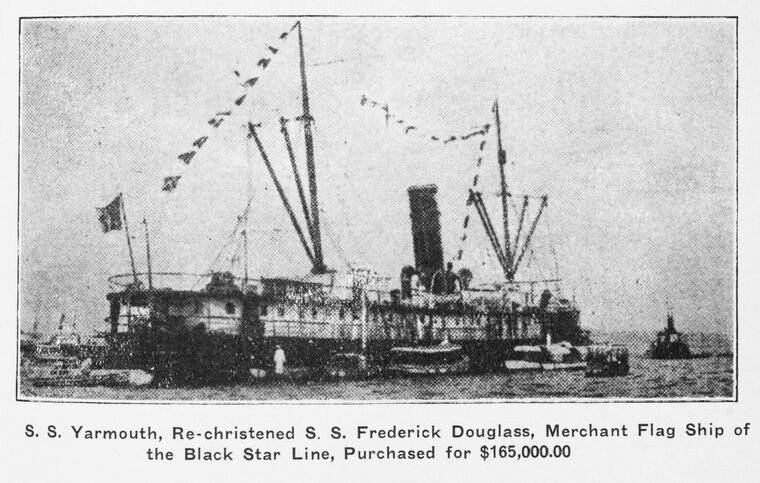
“Unsophisticated followers”
The future was bright for the UNIA and its Newport News division. The Black Star Line’s Frederick Douglass visited the Hampton Roads harbor, and the Newport News division was united behind Garvey’s leadership. Things were looking up. However, criticism of the movement came from multiple areas.
In an editorial, the Newport News Star newspaper criticized the Garvey movement by saying, “When people get to the point where they cannot tolerate honest difference, they ought to be suppressed. A great deal of the trouble the Negro is having in this country is brought on by such irresponsible demagogues and blatherskites as Marcus Garvey has gathered together in his schemes to filch money from the pockets of his unsophisticated followers and sympathizers, and anyone who dares differ or oppose their schemes is roundly cursed and marked.”9
The Star was not alone in its criticism of Garvey. The Baptist Ministers Union said, “The Garvey movement has more of the appearance of mirage; or the hallucination of an enfeebled brain.”10 Criticism against the UNIA did not deter the local Garveyites. However, criticism from the ministers and newspapers was not the only source of concern for the Newport News UNIA.
Clandestine activities
Newport News UNIA division received a letter from Garvey about organizing a military branch of the UNIA called the African Legion. Garvey instructed Joseph King to organize the men into companies of 64, with King as the Major. King had the men drill at the Elks Hall (located in between current Newport Harbour Apartments and The Hampton Roads Boys’ Club) every Thursday night. H. Vinton Plummer Jr. and a new member, James Wormley Jones, helped King write “The Official Drill Regulations of the African Legion of the Military Branch of the UNI Association and A.C. League.”11 Yet, unbeknownst to King and Plummer, their co-author Jones, was a Bureau of Investigation (the forerunner of the Federal Bureau of Investigation) informant.
James Wormley Jones was born in 1884 in Fort Monroe, Virginia. He received schooling in Cambridge, Massachusetts, Norfolk, Virginia, and at Virginia Union University in Richmond for a while, but he did not finish. Jones served as captain with the 92nd Infantry Division, US Army, during World War I and as an officer with the Washington, D.C. Police Department. The Bureau of Investigation hired him to go undercover in the UNIA to get close to Garvey, reporting what he learned directly to the head of the General Intelligence Division, J. Edgar Hoover.12
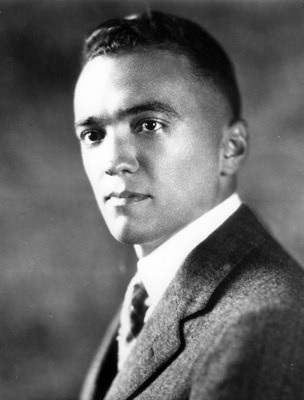
The Bureau of Investigation became interested in Garvey for a few reasons. One was that federal authorities viewed Garvey as a potentially dangerous agitator. Second, the stock sales of the Black Star Line. After an article in The Chicago Defender accusing Garvey of selling and misrepresenting The Black Star Line as a legitimate business, the Bureau of Investigation became interested in Garvey’s selling stock. The Bureau discovered that the Black Star Line corporation was not licensed to sell stock in Virginia. Therefore, any stock Garvey sold in Virginia was illegally sold.13 The Bureau of Investigation charged Garvey with mail fraud for selling Black Star Line stock. He was convicted in 1923 and began his imprisonment in 1925.14
“Back to Africa” and loss of appeal
Garvey’s most well-known and memorable activity is the “Back to Africa” movement. The idea is that descendants of enslaved Africans will leave the United States and return to Africa. However, after the inability to secure land in Liberia and Garvey’s conviction and subsequent deportation, he and his followers partnered with the Anglo-Saxon Clubs of America and then-Mississippi Senator Theodore Bilbo. Garveyites hoped that with support from white supremacists, the Virginia General Assembly and US Congress would support legislation for the repatriation of African Americans to Africa. Newport News was no exception. Ernest Cox of the Anglo-Saxon Clubs spoke before the Newport News UNIA division to support the emigration bills. Some members went as far as garnering signatures supporting these bills, but the bills failed.15 The “Back to Africa” idea and alliances with white supremacist groups and anti-civil rights legislators were not well received by all in the UNIA division and the African American community. P. B. Young, The Norfolk and Journal and Guide editor, wrote an editorial against emigration and against alliances with white supremacists.16 Some UNIA members did not want to wait for a repatriation bill nor work with white racists who had little political power. They believed something had to happen immediately to address the grievances of the African American community, especially with the rapid increase of unemployment in the Black community due to the Depression. To address their grievances, some members of the Newport News division organized a Negro Political Union (NPU) to unify the electorate and obtain as a body what the individual could not.17
Because of the failure of the repatriation bills, the start of the New Deal, Garvey’s deportation, and subsequent death in London in 1940, and the onset of World War II, membership dropped in Newport News and the UNIA overall. Soon the widespread appeal of the UNIA ceased to exist.18
The legacy of the Universal Negro Improvement Association and the Newport News division
Although the height of the Garvey movement was 100 years ago, the influence and memory of the movement continued. The Garvey movement influenced the Rastafari movement, the Nation of Islam (Malcolm X’s father, Earl Little, was a Garvey organizer in Omaha, Nebraska), and the Black Power movement.19 The Pan-African flag (red, black, and green) came out of the Garvey movement.20 More recently, the Hip Hop duo Black Star chose its name after Garvey’s Black Star Line.21 Chance the Rapper called his music festival Black Star Line Music Festival.22 New York City has a park named after Garvey, and Jamaica erected a statue of him.23
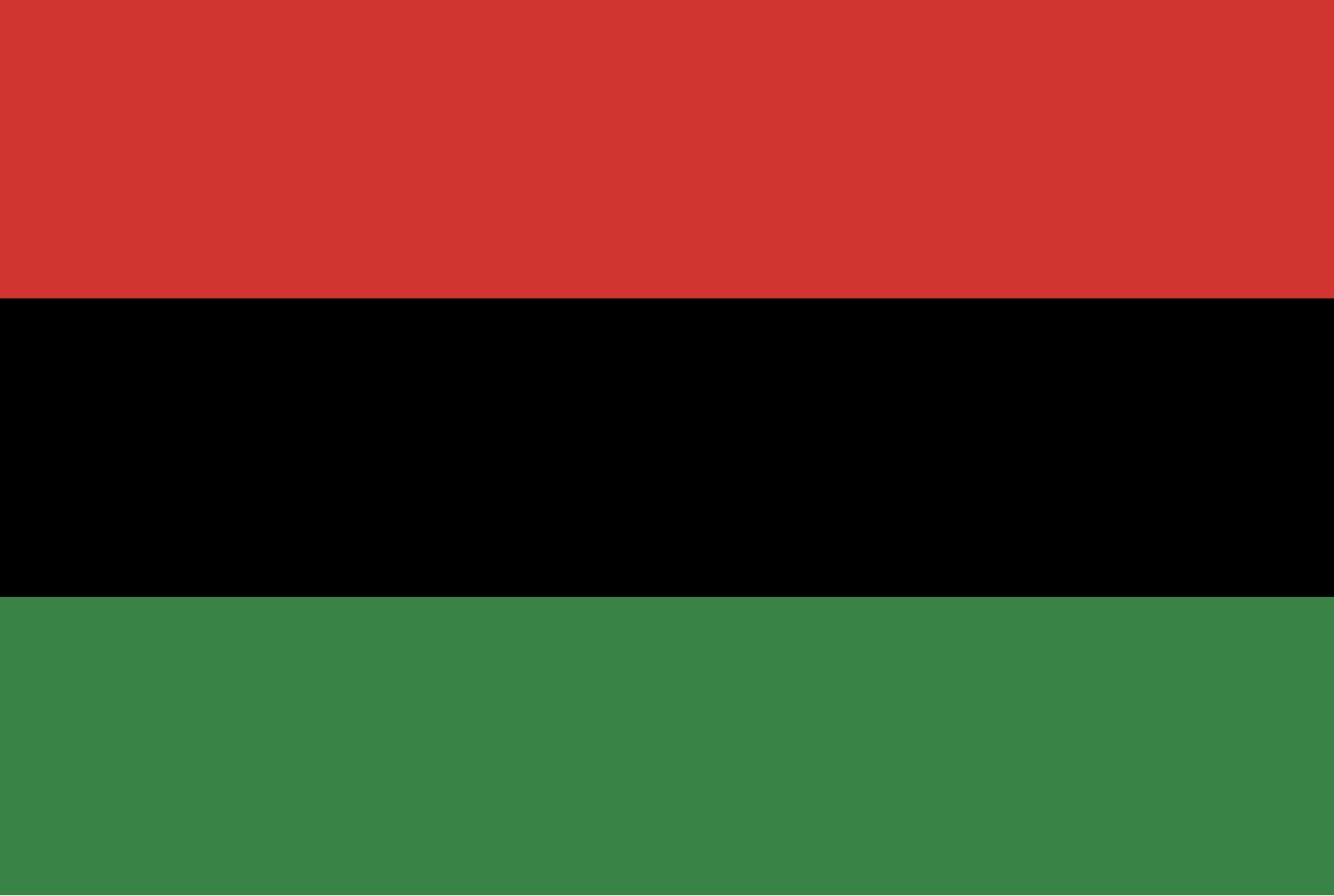
While his movement’s memory continues, the Marcus Garvey movement in Newport News is a forgotten local story. Much of the way the Garvey movement is taught (if it is taught) is as a New York City movement. Yet the Garvey movement was also a Newport News movement. The ideas Garvey spoke about, including, race pride and economic uplift, resonated with African Americans in Newport News who worked in the same careers (shipbuilding and longshoremen), lived on some of the same streets, and attended some of the same churches that many African Americans in Newport News still work, live, and worship today. I hope that the lost story of the Garvey movement in Newport News will now be shared when the history of African Americans in Newport News is told.
Endnotes
- Claudrena N. Harold “The Rise and Fall of the Garvey Movement in the Urban South, 1918-1942” (PhD diss., University of Notre Dame, 2004) pg. 19-20
- Ibid, pg 21
- H. Vinton Plummer “The Universal Negro Improvement Association: As I See It-Then-Now” The Spokesman May 1927, The Schomburg Center, New York Public Library.
Claudrena N. Harold “The Rise and Fall of the Garvey Movement in the Urban South, 1918-1942” (PhD diss., University of Notre Dame, 2004) pg. 157
- Mary G. Rolinson “Grassroots Garveyism: The Universal Negro Improvement Association in the Rural South, 1920-1927.” (The University of Chapel Hill:2007), pg. 51
- “People & Events: The Black Star Line” The American Experience: Marcus Garvey Look for me in the whirlwind PBS WGBH 1999-2000 http://www.shoppbs.pbs.org/wgbh/amex/garvey/peopleevents/e_blackstar.html Accessed 1/11/2023
- Robert Hill, Marcus Garvey and the Universal Negro Improvement Association Papers, Vol. II, Los Angeles: University of California Press, 1983. pg.119-120
- Ibid, Vol. I, pg 452
- Claudrena N. Harold “The Rise and Fall of the Garvey Movement in the Urban South, 1918-1942” (PhD diss., University of Notre Dame, 2004) pg. 160-163
- Norfolk Journal and Guide Feb 24. 1923
- Claudrena N. Harold “The Rise and Fall of the Garvey Movement in the Urban South, 1918-1942” (PhD diss., University of Notre Dame, 2004) pg. 171
- Robert Hill, Marcus Garvey and the Universal Negro Improvement Association Papers, Vol. II, Los Angeles: University of California Press, 1983. pg.203
- Katherine Hafner “A century ago, the son of former slaves in Hampton became the FBI’s first black special agent” The Virginian-Pilot 19 November 2019. Accessed 1/27/2023 https://www.pilotonline.com/history/vp-nw-james-wormley-jones-20191119-pspecvzajndutf4l72uonwasae-story.html
- Mary G. Rolinson “Grassroots Garveyism: The Universal Negro Improvement Association in the Rural South, 1920-1927.” (The University of Chapel Hill:2007), pg. 52, 54
- HISTORY.com “Marcus Garvey” A&E Television Networks, 9 November 2009, https://www.history.com/topics/black-history/marcus-garvey Accessed 1 February 2023
- Claudrena N. Harold “The Rise and Fall of the Garvey Movement in the Urban South, 1918-1942” (PhD diss., University of Notre Dame, 2004) pg. 175-196
- Ibid, pg 184-185
- Ibid, pg. 188-189
- Ibid, pg. 198
- Archives.gov “Marcus Garvey” African American Heritage, US National Archives 15 September 2020 https://www.archives.gov/research/african-americans/individuals/marcus-garvey#:~:text=Despite%20his%20controversial%20reputation%2C%20Garvey’s,movement%2C%20and%20the%20Rastafari%20movement Accessed 8 February 2023
- Leah Donnella “On Flag Day, Remembering The Red, Black, and Green” Code Switch 14 June 2017 https://www.npr.org/sections/codeswitch/2017/06/14/532667081/on-flag-day-remembering-the-red-black-and-green Accessed 14 February 2023
- Ian McCann “’Mos Def and Talib Kweli are Black Star’: Hip-Hop on a higher plane” Yahoo! Discovermusic 28 September 2002 https://www.yahoo.com/video/mos-def-talib-kweli-black-131359101.html Accessed 1/31/2023
- Ella Feldman “The History Behind Chance the Rapper’s Black Star Line Festival” The Smithsonian Magazine 22 December 2022. https://www.smithsonianmag.com/smart-news/chance-the-rapper-brings-free-music-festival-featuring-erykah-badu-and-vic-mensa-to-ghana-180981355/ Accessed 1/31/2023
- Micaiah Morgan “Museum to commemorate Jamaica’s first national hero Marcus Garvey near completion” Caribbean National Weekly 20 August 2022. https://www.caribbeannationalweekly.com/caribbean-breaking-news-featured/museum-to-commemorate-jamaicas-first-national-hero-marcus-garvey-near-completion/ Accessed 1/31/2023 https://www.nycgovparks.org/parks/marcus-garvey-park Accessed 1/31/2023